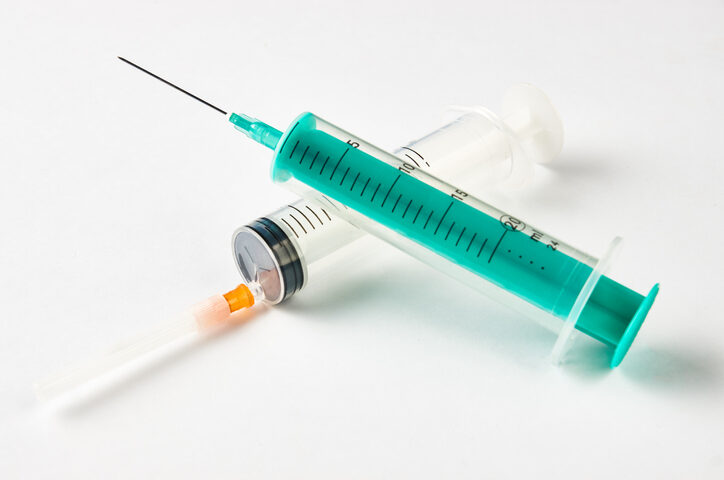Medical insert molding is a manufacturing technique that enables manufacturers to encase pre-formed, often metal, components in durable plastic to aid in product assembly. This method is widely used for various medical products that require threaded inserts, bushings, electrical contacts, spring-loaded clips, pins, or magnets.
Almost any component that can tolerate the pressure and temperature of injection molding is a suitable candidate for insert molding. Inserts with a knurled, ribbed, or abraded surface on the metal part will ensure a robust and permanent bond between metal and plastic, and the insert will remain locked into the molded part once it cools.
When Should Insert Molding Be Considered
Not every medical product is a candidate for insert molding. Sometimes product designers may be considering moving metal to plastic to reduce weight or prevent corrosion, but they still require fasteners or hardware for assembly. Insert molding can add cost to the process but reduces downstream processes. So, when choosing insert molding, consider all aspects of the product’s life cycle to determine its suitability. Insert molding is used for many reasons, including:
- Products that need to be easily disassembled or require maintenance access
- Medical products that require tight tolerances and accurate placement of inserts, which can be particularly beneficial for parts with female threads, as it can ensure that the threads are properly aligned and dimensionally accurate
- Products that require attaching two high-load-bearing parts
- Products requiring conductive features or components to be adhered directly into the molded part to reduce the risk of failure because of poorly connected components.
Benefits of Medical Insert Molding
Once it is determined that a medical application can benefit from insert molding, it will see many benefits that improve the total cost of ownership for the component.
Additional benefits of insert molding include:
- Improves component reliability
- Enhances product functionality
- Increases component strength and stability
- Reduces the need for secondary operations, reducing assembly, costs, and lead times
- Decreases product weight over fully metal component
- Provides greater design flexibility
How Insert Molding Works
Before molding, the insert undergoes prepping, which may involve sealing open ends to prevent plastic from flowing where it shouldn’t, cleaning to prevent contamination from weakening the bond between the substrates, or surface roughening to provide a more secure attachment.
The molding process itself is similar to conventional injection molding. It involves melting and injecting a resin into a mold. However, the difference is that inserts have been placed in the mold prior to the injection. The basic steps of the process include the following:
- A medical part is designed for injection molding.
- Plastic injection molds are designed and built.
- Inserts are sourced or manufactured.
- The inserts are positioned correctly within the mold, either with automation or by hand.
- Molten resin under pressure is forced into the mold and around the insert.
- The cooled part is removed from the mold.
- Sprues are removed.
- Post-processing deburring, heat treatment, and surface finishing may occur.
Insert Molding Compared to Heat Staking and Ultrasonic Welding
Hand placement of inserts must be done carefully to avoid a misplacement that can damage the mold. Some companies choose, instead, to mold depressions for the inserts and secure them later by ultrasonic welding or heat staking. However, insert molding remains the better choice for medical products.
Heat staking and ultrasonic welding are post-molding processes, which adds another step to the process. Heat staking involves applying heat to the metal insert, which softens the plastic as it is pushed in. Ultrasonic welding uses vibrational frequency to soften the plastic for insertion. Inadequate melt during these methods can damage the part and insert, and there’s the risk of insufficient plastic flowing into the insert’s fins and knurls to achieve desired holding strength. Also, these two methods are limited to metal components, unlike insert molding. Generally, better and more reproducible encapsulation is achieved with insert molding than these other techniques, making it the ideal choice for medical products where reliability is critical.
Design Considerations
While designing for manufacturing (DFM), best practices should be followed (e.g., optimizing draft angles, avoiding sharp corners, using uniform wall thickness, and optimizing gate placements). Some guidelines are specific to inserts that should be incorporated into your design.
- Ensure inserts have indentations or textured surfaces or are designed with undercuts to hold them into place.
- The insert’s edges should be rounded to prevent areas of stress concentration in the plastic.
- The insert should be placed so the resin flows evenly around it, and considers other features, such as the parting line.
- Recommended allowances for the inserts are around + 0.01 mm.
- The plastic thickness beneath the metal insert should equal at least 1 /6 of the diameter of the metal insert to avoid sink marks.
- The insert should extend a minimum of 0.016″ (0.4 mm) into the mold cavity.
- The insert should be small relative to the plastic part.
- Thicker boss walls are needed to compensate for the higher stress resulting from the differences in the coefficient of linear thermal expansion (shrinkage rates) between metal and plastic.
- If the insert with an outside diameter (OD) of less than 0.25 (6.35 mm) is used, the boss OD should be at least twice the insert OD.
- Radial ribs should be used on bosses with inserts to increase strength.
Learn if Insert Molding Is Your Best Option
If you are unsure if insert molding is the best choice for your medical product, ask us. We specialize in medical product design and injection molding, so we can help you optimize your design or tell you if another option will work better. Contact our engineering team to start a discussion.

